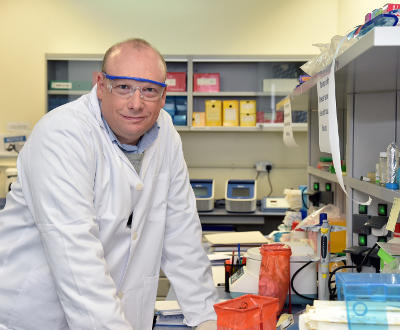Using AI to control energy for indoor agriculture
30 September 2024
Published online 9 February 2017
Off the the western coast of the United Arab Emirates is a unique facility that aims to find new ways to help address the region’s food and energy demands.

© Qatar University
The Gulf Corporation Countries (GCC) face severe food and water challenges. The region was less than 30% self-sufficient in food production in 2011, down from 40% in 2005. And Saudi Arabia, Qatar and the UAE had only 78, 26 and 17 cubic metres of renewable internal freshwater resources available per capita in 2014. In comparison, the United Kingdom had 2,244 cubic metres of freshwater per capita in the same year. Less than 500 cubic metres per person is considered absolute water scarcity.
This dearth is compounded by high energy use and rapidly increasing populations, and calls for effective strategies for water, food and energy security.
The Seawater Energy and Agriculture System (SEAS) was launched in Abu Dhabi in 2015 by the Sustainable Bioenergy Research Consortium (SBRC), formed by Masdar Institute of Science and Technology, Etihad Airways, Boeing, UOP Honeywell, General Electric, Takreer and Safran.
The system first uses seawater to raise fish and shrimp for food. The aquaculture’s nutrient-rich wastewater is then used to fertilize a salt-tolerant plant called salicornia. This plant normally grows in the wild. Its stalks, which can be eaten, resemble those of asparagus. Oil can be extracted from its seeds that can then be refined into biofuelfor aeroplanes. The remaining part of the seed after oil extraction can be used as feed for the fish and shrimp. The dried straw that remains after the removal of the seeds can be added to livestock feed, gasified to generate electricity, or buried to improve soil.
"A greater emphasis on aquaculture would reduce fishing pressure on wild fish stocks in the Gulf."
The wastewater is then diverted to a mangrove forest, its waste products are filtered before it is diverted back into the sea. The mangrove forest also removes carbon from the atmosphere, while branches and leaves can be trimmed and added to the salicornia straw for electricity generation.
“As far as we know, this is the only facility currently operating with three subsystems with the use of saltwater and arid land,” says SBRC director Alejandro Rios Galvan.
There have been previous attempts in Eritrea (1998 to 2003) and Mexico (2005 to 2010) to operate similar systems, but both failed, clarifies Galvan, due to political conflict and mismanagement respectively.
The project has just started its first planting season, so results are pending. But research conducted to assess the sustainability of this type of project has found that an integrated seawater energy agriculture system (ISEAS) “should not be considered as a primary fuel production process,” says associate professor of engineering systems and management at Masdar Institute, Sgouris Sgouridis, one of the study’s co-authors.
This system relies on a process that can sustainably augment aquaculture-based products while using the waste as a bio-based resource to develop fossil fuel alternatives.
A lot of salicornia would be needed to produce sufficient quantities of biofuel for the aviation industry, for instance. “If 50% of the global coastal desert land was used for ISEAS, 7 to 21% of the world’s jet fuel demand in 2020 could come from these operations,” says Jed Brown of Qatar University’s Center for Sustainable Development.
“The Gulf region would benefit by focusing greater effort on using seawater and high salinity groundwater for aquaculture and agriculture,” adds Brown. “A greater emphasis on aquaculture would have the ancillary benefit of reducing fishing pressure on overfished wild fish stocks in the Gulf. This could be an important component in countries that are attempting to diversify their economies away from petroleum.”
The study also found that, under conservative estimates, fuel co-products of an ISEAS have a significantly lower carbon footprint than their fossil fuel alternatives.
Significant development efforts are needed in the agronomy of salicornia and other salt-tolerant plants to succeed in making them viable for commercial use, adds Sgouridis.
"The ISEAS process is innovative, ingenious but complex," says Andrew Bennett, president of the UK’s Tropical Agricultural Association. "The pilot study should produce some valuable data and hopefully a proof of concept."
He adds that since the environmental conditions in the Gulf are extreme, they will act as a rigorous test for any aquaculture or saline production system.
“The fact that some earlier tests of elements of the system elsewhere have failed points to the importance of management and careful monitoring. The study should begin to assemble information on the costs and possible returns from each enterprise,” says Bennett.
doi:10.1038/nmiddleeast.2017.31
Stay connected: